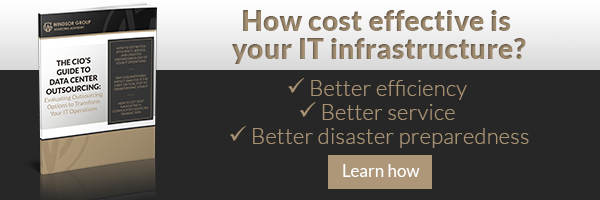 Few things are more important to secure your company’s future than IT infrastructure planning. “Disaster” doesn’t have to come in the form of Katrina or Sandy to wreak havoc throughout your enterprise, bringing you to a standstill. Recovering IT operations is critical, because you cannot resume anything else without reliable technology.
Few things are more important to secure your company’s future than IT infrastructure planning. “Disaster” doesn’t have to come in the form of Katrina or Sandy to wreak havoc throughout your enterprise, bringing you to a standstill. Recovering IT operations is critical, because you cannot resume anything else without reliable technology.
You need a plan. One that’s current. One you know for sure will work.
What in a plan?
IT infrastructure planning is based on achieving your overall business goals, priorities and timeline. But what if some type of failure occurs? What will be needed from IT to assure you can meet your short-term objectives when the worst case presents itself?
Your plan has to address both physical protection and process redundancy. Including both business continuity and disaster recovery teams in your planning process will ensure smooth, efficient coordination and division of responsibilities when something goes awry.
Cross- training is important, too. It protects your plan no matter who’s there -- or who’s not available because they’re offsite or even incapacitated by the disaster itself.
Outsourcing can alleviate concerns by locating facilities, data and functions offsite or in the cloud. It’s imperative to include outsourcing partners in your IT infrastructure planning process and also to know how their own disaster recovery plan serves you and how you’ll coordinate response to any problem.
Regardless of whether you’re outsourcing some or all of your IT functions, a sourcing advisor can help you evaluate your disaster preparedness against best-in-class standards to ensure you’re incorporating the latest industry best practices.
What could go wrong?
For IT infrastructure planning purposes, think up potentialities that may seem extreme. Obvious problems with straight-forward answers aren’t “disasters” and won’t prepare you for one. A plan formulated to address comprehensive, enterprise-wide failures will prepare you to effectively handle anything that comes your way. Remember you may or may not have any warning of impending disaster.
Considering a variety of possible problems also prepares you more realistically. There are any number of things that can go wrong – some human-caused, some weather-related and some just the inevitable glitches -- and how you need to respond could differ substantially. Is your entire enterprise affected, or are only some aspects of your IT infrastructure down? A short outage, even at your primary data center, may not be all that disruptive, whereas a long-lasting outage could require failover/failback systems to kick in.
Are you sure your plan will work?
Forrester Research says a surprisingly large number of companies don’t bother to test their plan to check how well – or if – it actually works. What if it doesn’t?
Your people have to know what to do in an emergency, so they can step up quickly and appropriately. Test the technical aspects of your plan, but do periodic walk-throughs, too. Since your enterprise is a living, changing organism, introduce your disaster recovery plan to new employees. And since you operate in a dynamic global environment, regularly review and update your plan so it’s keeping pace with other corporate changes.
You don’t operate in a vacuum.
Time is of the essence when things go wrong, so business continuity can be derailed by poor communication. That’s not just an internal issue. What can your customers expect in the event of a disaster? What are your projected capabilities in terms of functionality and timing? How will you communicate with them?
Your plan should instill confidence, particularly if you manage transactional exchanges for customers. Fast, clear communication enables those outside your organization to respond effectively, too.
The act of disaster recovery planning also helps you gain greater insight into daily operations to identify opportunities to streamline processes and improve communication across the board. But Murphy’s Law applies. Regularly updated IT infrastructure planning ensures you’re doing everything you can to improve disaster preparedness. You’ll be ready to weather the storm, whatever its source and whatever the magnitude.
Photo credit: NOAA


